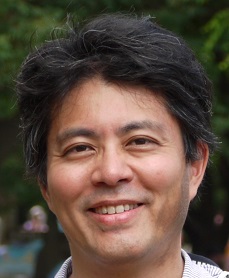脳のストレス応答と香りの効果:増尾 好則(一般社団法人ブレインアナリスト協会・学術顧問)
ハンス・セリエの「ストレス学説」(Nature, 1936年)は、外部環境からの刺激(ストレッサー)によって生じる非特異的な心身の歪みをストレスと定義しています。ストレッサーは、現在一般的に「ストレス」と呼ばれ、心の障害を生じる危険因子の中で最も重要視されています。しかし、ストレスから障害発症に至る過程の脳内メカニズムは未だ解明されておらず、障害発症の予防は困難であるといわざるを得ません。私たちは、ストレスにより発現変化を示す感度の良い新規バイオマーカー(ストレスマーカー)を探索するため、脳と血液のストレス応答を中心に解析してきました。これらのストレスマーカー群は、心の障害発症メカニズムの解明に資すると共に、発症の予防・治療に貢献すると考えられます。
様々なストレス抑制法が経験的に知られているにも関わらず、その効果が科学的に証明されているものは多くありません。ヒトの嗅覚は退化しているといわれていますが、2004 年に「匂い受容体候補遺伝子の発見」に対してノーベル生理学・医学賞が授与されたことからも分かる通り、嗅覚は重要な感覚の一つです。2008年、私たちはコーヒー豆の香りが実験動物の脳内遺伝子や蛋白質の発現レベルを変化させることを見出しました。それら脳内因子は神経の生存・維持や抗酸化に関わっていることから、コーヒー豆の香りがストレス抑制効果や抗酸化作用を有することが示唆されました。その後、ラベンダー、ヒノキ、α-ピネン、タイム・リナロール等のアロマやゴマ油の香りが脳に作用してストレスを抑制することを証明してきました。香り成分のストレス抑制効果を明らかにすることは、生体の理解に資するだけでなく、香り成分の有効利用を可能にして社会に貢献し得ると考えられます。一方、香りは揮発性成分から成っているため、注射による薬理作用のように用量と反応の相関関係を明らかにすることが難しいといった研究上の困難さは否定出来ません。今後、揮発性成分の物性はもとより、脳への移行性等を含む学際的研究が進むことににより、従来の知見からは想像し得ない新展開が期待されます。
本講義では、先ずストレスが生体に及ぼす影響と心の障害について触れた後、嗅覚と脳内神経回路および香りのストレス抑制効果について実際のデータを紹介したいと思います。この講義を通じて、香りの効果は決して心理的なものだけでなく、神経科学的な根拠に基づくものであることがお分かり頂けると思います。
講師
増尾 好則 先生
一般社団法人ブレインアナリスト協会・学術顧問
日時
2022年10月18日(火)13:00~17:30(12:40より受付開始)
※増尾先生の講義は、13:00~14:10です。
場所
入館方法
JA共済ビルのエントランスフロアで受付を済ませてから、左側のエレベーターにて9階までお越しください。応用脳科学アカデミーの案内看板が掲示されています。
そちら側よりご入室いただきますと、右側奥に応用脳科学アカデミー受付(臨時設置)がございます。
お問い合せ先
本アカデミーに関するご質問等は、 「各種お問い合わせフォーム」 より、お問い合わせください。
講師紹介
増尾 好則(ますお よしのり)先生

現職
一般社団法人ブレインアナリスト協会・学術顧問
経歴
1983年 東邦大学 理学部生物学科 卒業
1986年 筑波大学 大学院医科学研究科 神経生化・薬理学専攻 修士課程修了
1990年 パリ第6大学 大学院神経科学専攻 博士課程修了
1994年 博士(医学)取得(東京大学)
1990年~ 武田薬品工業株式会社 医薬開拓研究本部 筑波研究所・研究員
1993年より研究グループ長、1997年4月より主任研究員
1997年~ 東邦大学医学部第2生理学講座・助手
2000年~ 工業技術院生命工学工業技術研究所(現 産業技術総合研究所(産総研))・特別研究員
2001年~ 新エネルギー・産業技術総合開発機構(NEDO)フェロー(産総研勤務)
2005年~ 産総研ヒューマンストレスシグナル研究センター・精神ストレス研究チーム長
2008年~ 同研究センター設置期限終了に伴い、産総研健康工学研究センター・精神ストレス研究チーム長
2010年~2022年4月 東邦大学 理学部生物学科/大学院理学研究科生物学専攻人間生物学部門 神経科学研究室・教授
2022年 同上、定年退職
研究概要
心はストレスの影響を受けやすいことが知られていますが、ストレスによって脳に生じる変化はまだあまり分かっていません。私たちは、ストレスが脳に及ぼす影響について、運動の調節や認知機能を中心に研究しています。個体の行動解析から、さまざまな脳内物質の遺伝子や蛋白質の発現、および神経伝達物質の放出や受容体の解析に至る多角的なアプローチによって、ストレス応答メカニズムの解明をめざしてきました。さらに、上記解析を通して、香りが脳のストレス応答に及ぼす影響を明らかにしつつあります。
主な業績
原著論文(英文)
- Takemoto H, Saito Y, Misumi K, Nagasaki M, Masuo Y. Stress-Relieving Effects of Sesame Oil Aroma and Identification of the Active Components. Molecules. 2022 Apr 20;27(9):2661. doi: 10.3390/molecules27092661.
- Takemoto H, Take C, Kojima K, Kuga Y, Hamada T, Yasugi T, Kato N, Koike K, Masuo Y. Effects of Sesame Oil Aroma on Mice after Exposure to Water Immersion Stress: Analysis of Behavior and Gene Expression in the Brain. Molecules. 2020 Dec 14;25(24):5915. doi: 10.3390/molecules25245915.
- Satou T, Hayakawa M, Goto Y, Masuo Y, Koike K. Anxiolytic-like effects of essential oil from Thymus vulgaris was increased during stress. Flavour and Fragrance Journal. 33 (2018) 191-195.
- Hayakawa M, Satou T, Koike K, Masuo Y. Anti-fatigue activity of essential oil from thyme (linalool chemotype) in the polyriboinosinic-polyribocytidylic acid-induced brain fatigue mouse. Flavour and Fragrance Journal 31 (2016) 395-399.
- Kobayashi Y, Kulikova SP, Shibato J, Rakwal R, Satoh H, Pinault D, Masuo Y. DNA microarray unravels rapid changes in transcriptome of MK-801 treated rat brain. World J Biol Chem. 6 (2015) 389-408.
- Kasuya H, Okada N, Kubohara M, Satou T, Masuo Y, Koike K. Expression of BDNF and TH mRNA in the brain following inhaled administration of α-pinene. Phytother Res. 29 (2015) 43-47.
- Kasuya H, Hata E, Satou T, Yoshikawa M, Hayashi S, Masuo Y, Koike K. Effect on emotional behavior and stress by inhalation of the essential oil from Chamaecyparis obtusa. Nat Prod Commun. 8 (2013) 515-518.
- Takahashi M, Yoshino A, Yamanaka A, Asanuma C, Satou T, Hayashi S, Masuo Y, Sadamoto K, Koike K. Effects of inhaled lavender essential oil on stress-loaded animals: changes in anxiety-related behavior and expression levels of selected mRNAs and proteins. Nat Prod Commun. 7 (2012) 1539-1544.
- Akazawa YO, Saito Y, Nishio K, Horie M, Kinumi T, Masuo Y, Yoshida Y, Ashida H, Niki E, Proteomic characterization of the striatum and midbrain treated with 6-hydroxydopamine: alteration of 58-kDa glucose-regulated protein and C/EBP homologous protein. Free Radic Res. 44 (2010) 410-421.
- Masuo Y, Imai T, Shibato J, Hirano M, Jones OAH, Maguire ML, Satoh K, Kikuchi S, Rakwal R. Omic analyses unravels global molecular changes in the brain and liver of a rat model for chronic Sake (Japanese alcoholic beverage) intake. Electrophoresis. 30 (2009) 1259?1275.
- Seo HS, Hirano M, Shibato J, Rakwal R, Hwang IK, Masuo Y. Effects of coffee bean aroma on the rat brain stressed by sleep deprivation: a selected transcript- and 2D gel-based proteome analysis. J Agric Food Chem. 56 (2008) 4665-4673.
- Hirano M, Rakwal R, Shibato J, Sawa H, Nagashima K, Ogawa Y, Yoshida Y, Iwahashi H, Niki E, Masuo Y. Proteomics- and transcriptomics-based screening of differentially expressed proteins and genes in brain of Wig rat: a model for attention-deficit hyperactivity disorder (ADHD) research. J Proteome Res. 7 (2008) 2471-2489.
- Hirano M, Rakwal R, Kouyama N, Katayama Y, Hayashi M, Shibato J, Ogawa Y, Yoshida Y, Iwahashi H, Masuo Y. Gel-based proteomics of unilateral irradiated striatum after gamma knife surgery. J Proteome Res. 6 (2007) 2656-2668.
- Masuo Y, Ishido M, Morita M, Sawa H, Nagashima K, Oka S, Niki E. Behavioural characteristics and gene expression in the hyperactive wiggling (Wig) rat. Eur J Neurosci. 25 (2007) 3659-3666.
- Masuo Y, Ogura A, Kobayashi M, Masaki T, Furuta Y, Ono T, Takamatsu K. Hippocalcin protects hippocampal neurons against excitotoxin damage by enhancing calcium extrusion. Neuroscience. 145 (2007) 495-504.
- Saito Y, Nishio K, Ogawa Y, Kinumi T, Yoshida Y, Masuo Y, Niki E. Molecular mechanisms of 6-hydroxydopamine-induced cytotoxicity in PC12 cells ? Involvement of hydrogen peroxide-dependent and ?independent action. Free Radical Bio Med. 42 (2007) 675-685.
- Ishikawa Y, Kozakai T, Morita H, Saida K, Oka S, Masuo Y. Rapid detection of Mycoplasma contamination in cell cultures using syber green-based real-time polymerase chain reaction. In Vitro Cell Dev Biol Anim. 42 (2006) 63-69.
- Ishido M, Morita M, Oka S, Masuo Y. Alteration of gene expression of G protein-coupled receptors in endocrine disruptors-caused hyperactive rats. Regul Peptides. 126 (2005) 145-153.
- Ishido M, Masuo Y. Transcriptome of pituitary adenylate cyclase-activating polypeptide-differentiated PC12 cells. Regul Peptides. 123 (2004) 15-21.
- Masuo Y, Morita M, Oka S, Ishido M. Motor hyperactivity caused by a deficit in dopaminergic neurons and the effects of endocrine disruptors: a study inspired by the physiological roles of PACAP in the brain. Regul Peptides. 123 (2004) 225-234.
- Masuo Y, Ishido M, Morita M, Oka S, Niki E. Motor activity and gene expression in rats with neonatal 6-hydroxydopamine lesions. J Neurochem. 91 (2004) 9-19.
- Ishido M, Masuo Y, Oka S, Morita M. Dicyclohexylphthalate causes hyperactivity in the rat concomitantly with impairment of tyrosine hydroxylase immunoreactivity. J Neurochem. 91 (2004) 69-76.
- Ishido M, Masuo Y, Oka S, Kunimoto M, Morita M. Bisphenol A causes hyperactivity in the rat concomitantly with impairment of tyrosine hydroxylase immunoreactivity, J Neurosci Res. 76 (2004) 423-433.
- Masuo Y, Ishido M, Morita M, Oka S. Effects of neonatal treatment with 6-hydroxydopamine and endocrine disruptors on motor activity and gene expression in rats. Neural Plast. 11 (2004) 59-76.
- Masuo Y, Ishikawa Y, Kozakai T, Uchide T, Komatsu Y, Saida K. Vasoactive intestinal contractor/endothelin-2 gene expression in the murine central nervous system. Biochem Biophys Res Commun. 300 (2003) 661-668.
- Hinuma S, Habata Y, Fujii R, Kawamata Y, Hosoya M, Fukusumi S, Kitada C, Masuo Y, Asano T, Matsumoto H, Sekiguchi M, Kurokawa T, Nishimura O, Onda H, Fujino M. A prolactin-releasing peptide in the brain. Nature. 393 (1998) 272-276.
- Fukuhara C, Inouye SI, Matsumoto Y, Tsujimoto G, Aoki K, Masuo Y. Pituitary adenylate cyclase-activating polypeptide (PACAP) rhythm in the rat pineal gland. Neurosci Lett. 241 (1998) 115-118.
- Nicot A, Bidard JN, Kitabgi P, Lhiaubet AM, Masuo Y, Palkovits M, Rostene W, Berod A. Neurotensin and neuromedin N brain levels after fornix transection: evidence for an efficient neurotensin precursor processing in subicular neurons. Brain Res. 702 (1995) 279-283.
- Masuo Y, Noguchi J, Morita S, Matsumoto Y. Effects of intracerebroventricular administration of pituitary adenylate cyclase-activating polypeptide (PACAP) on the motor activity and reserpine-induced hypothermia in murines. Brain Res. 700 (1995) 219-226.
- Masuo Y, Tokito F, Matsumoto Y, Shimamoto N, Fujino M. Ontogeny of pituitary adenylate cyclase activating polypeptide (PACAP) and its binding sites in the rat brain. Neurosci Lett. 170 (1994) 43-46.
- Checler F, Barelli H, Dauch P, Vincent B, Dive V, Beaudet A, Daniel EE, Fox-Threlkeld JET, Masuo Y, Vincent JP. Recent advances on endopeptidase-3.4.24.16. Biochemical Society Transactions. 21 (1993) 692-697.
- Dauch P, Masuo Y, Vincent JP, Checler F. A survey of the cerebral regionalization and ontogeny of eight exo- and endo-peptidases in murines. Peptides. 14 (1993) 593-599.
- Masuo Y, Matsumoto Y, Tokito F, Tsuda M, Fujino M. Effects of vasoactive intestinal polypeptide (VIP) and pituitary adenylate cyclase activating polypeptide (PACAP) on the spontaneous release of acetylcholine from the rat hippocampus by microdialysis. Brain Res. 611 (1993) 207-215.
- Masuo Y, Suzuki N, Matsumoto H, Tokito F, Matsumoto Y, Tsuda M, Fujino M. Regional distribution of pituitary adenylate cyclase activating polypeptide (PACAP) in the rat central nervous system as determined by sandwich-enzyme immunoassay. Brain Res. 602 (1993) 57-63.
- Dauch P, Masuo Y, Vincent JP, Checler F. Endopeptidase 24.16 in murines: tissue distribution, cerebral regionalization and ontogeny. J Neurochem. 59 (1992) 1862-1867.
- Rostene W, Brouard A, Dana C, Masuo Y, Agid F, Vial M, Lhiaubet AM, Pelaprat D. Interaction between neurotensin and dopamine in the brain. Morphofunctional and clinical evidence. Ann NY Acad Sci. 668 (1992) 217-231.
- Masuo Y, Ohtaki T, Masuda Y, Tsuda M, Fujino M. Binding sites for pituitary adenylate cyclase activating polypeptide (PACAP): comparison with vasoactive intestinal polypeptide (VIP) binding site localization in rat brain sections. Brain Res. 575 (1992) 113-123.
- Masuo Y, Giscard-Dartevelle S, Bouizar Z, Rostene W. Effects of cerebral lesions on binding sites for calcitonin and calcitonin gene-related peptide in the rat nucleus accumbens and ventral tegmental area. J Chemical Neuroanatomy. 4 (1991) 249-257.
- Checler F, Dauch P, Masuo Y, Vincent JP. Neurotensin and neuromedin N are differently metabolized in ventral tegmental area and nucleus accumbens. J Neurochem. 56 (1991) 1320-1328.
- Masuo Y, Pelaprat D, Scherman D, Rostene W. [3H]Dihydrotetrabenazine, a new marker for the visualization of dopaminergic denervation in the rat striatum. Neurosci Lett. 114 (1990) 45-50.
- Masuo Y, Montagne MN, Pelaprat D, Scherman D, Rostene W. Regulation of neurotensin-containing neurons in the rat striatum. Effects of unilateral striatal lesions with quinolinic acid and ibotenic acid on neurotensin content and its binding site density. Brain Res. 520 (1990) 6-13.
- Masuo Y, Pelaprat D, Montagne MN, Scherman D, Rostene W. Regulation of neurotensin-containing neurons in the rat striatum and substantia nigra. Effects of unilateral nigral lesion with 6-hydroxydopamine on neurotensin content and its binding site density. Brain Res. 510 (1990) 203-210.
- Darchen F, Masuo Y, Vial M, Rostene W, Scherman D. Quantitative autoradiography of the rat brain vesicular monoamine transporter using the binding of [3H]dihydrotetrabenazine and 7-amino-8-[125I]iodoketanserin. Neuroscience. 33 (1989) 341-349.
- Masuo Y, Kanazawa I. Effects of the unilateral striatal lesion on neurotransmitter markers in the contralateral striatum and both substantia nigrae of the rat. Neuroscience. 27 (1988) 827-836.
原著論文(和文)
- 増尾好則. 香りが脳に及ぼす影響:ストレス抑制効果の解析. 香料. 278 (2018) 21-31.
- 増尾好則. コーヒー豆の芳香によるストレス抑制効果:脳内遺伝子および蛋白質発現の変化. Aroma Research. 9 (2008) 54-61.
- 増尾好則. 環境改善・健康増進の新視点を探る. 応用科学学会誌. 20 (2006) 40-41.
- 増尾好則. 環境ストレスによる精神・神経障害発症の可能性. 応用科学学会誌. 20 (2006) 23-28.
- 小山完二, 浜 裕, 増尾好則, 小山恭子, 後藤勝年. グルホシネートのL体とグルホシネートの代謝物がラットの行動に与える影響. 日本救急医学会雑誌. 7 (1996) 731-732.
- 増尾好則, 金澤一郎. ラット一側線条体破壊の大脳基底核神経伝達物質に及ぼす影響. 神経精神薬理. 7 (1985) 729-739.
総説
- Masuo Y, Satou T, Takemoto H, Koike K. Smell and stress response in the brain: review of the connection between chemistry and neuropharmacology. Molecules. 2021 Apr 28;26(9):2571. doi: 10.3390/molecules26092571.
- 増尾好則. 脳のストレス応答メカニズムを解析する. Aroma Research. 18 (2017) 36-37.
- 増尾好則. コーヒー豆の香りで疲労恢復:脳内遺伝子・蛋白質発現の変化, Aromatopia, 21 (2012), 26-29.
- Masuo Y, Ishido M. Neurotoxicity of endocrine disruptors: possible involvement in brain development and neurodegeneration, J Toxicol Environ Health B Crit Rev, 14 (2011) 346-369.
- 増尾好則, 石堂正美. 環境ホルモン. 特集:神経と環境・中毒, 環境物質と細胞機能. Clinical Neuroscience. 25 (2007) 874-876.
- 増尾好則, 石堂正美. 物質的環境が自閉症と注意欠陥多動性障害へどう影響するか. 精神科. 6 (2005) 245-251.
著書
- 増尾好則. 香りの生理学. 植物療法学(小池一男編著), 京都廣川書店, 2016, 37頁-47頁.
- Masuo Y, Shibato J, Rakwal R. ADHD animal model Characterization : a Transcriptomics and Proteomics Analysis. In H Firas, F.H. Kobeissy (Eds.), Psychiatric Disorders: Methods in Molecular Biology, Springer (Humana Press), vol. 829 (2012), pp. 505-530.
- Masuo Y, Hirano M, Shibato J, Nam HW, Fournier J, Celine M, Wisztorski M, Salzet M, Soya H, Agrawal GK, Ogawa T, Shioda S, Rakwal R. Brain proteomics: sampling preparation techniques for the analysis of rat brain samples using mass spectrometry. In A. Ivanov and A. Lazarev (Eds), Sample Preparation in Biological Mass Spectrometry, Springer (Humana Press), 2011, pp. 171-195.
- 増尾好則, 二木鋭雄. ストレスと脳内老化. 脳内老化制御とバイオマーカー - 基盤研究と食品素材(大澤俊彦・丸山和佳子監修)第4編 ストレスと老化 - メンタルとフィジカル, シーエムシー出版, 2009, 271頁-280頁.
- 増尾 好則. ストレスと疾患:中枢神経系. ストレスの科学と健康(二木鋭雄 編著), 共立出版, 2008, 122頁-128頁.
- Checler F, Dauch P, Barelli H, Dive V, Vincent B, Masuo Y, Vincent JP. Identification and distribution of endopeptidase 24.16 in the central nervous system. In A.I. Smith (Ed.), Methods in Neurosciences, Vol. 23, Peptidases and Neuropeptide Processing, Academic Press, 1995, pp. 363-382.






